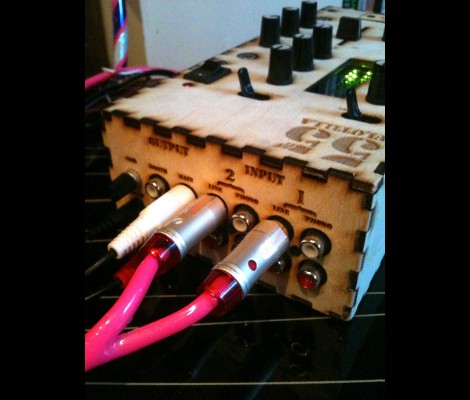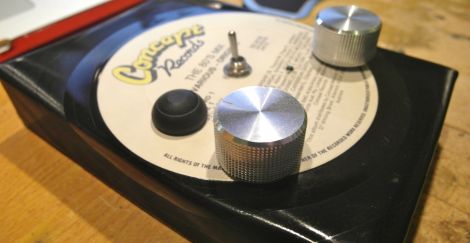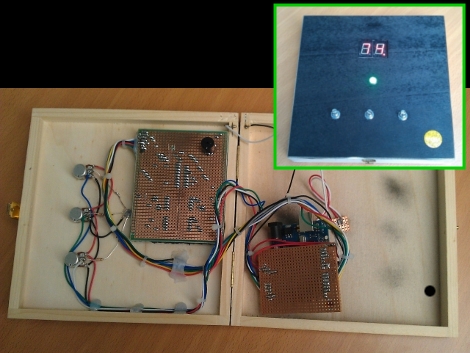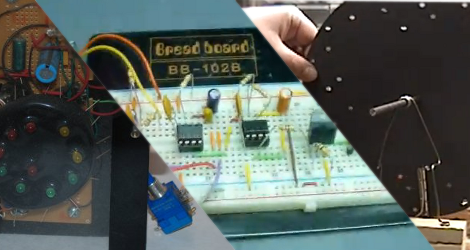
[Toby Cole] likes to mix tunes whenever he gets a chance. But the size of his DJ equipment made it a real bother to lug around with him. He does own a Behringer portable mixer but without cross faders it’s not really all that usable, and most of the other offerings don’t get good reviews. He ended up replacing the enclosure of a proper mixer in order to make it light and small. The growing availability of affordable laser-cut parts made this project possible.
Build Brighton, [Toby’s] local Hackerspace, has a laser cutter. So he knew that if he could figure out a smaller case design it would be a snap to get his parts made. He cracked open the heavy metal case on the KMX 100 mixer and found it had a ton of extra room inside. He designed all of the plates using a digital calipers to properly space the holes and text labels. These designs were combined with BoxMaker to produce the files the laser cutter needed. The first prototype was cut from cardboard, with the finished product cut from 3mm plywood.

















